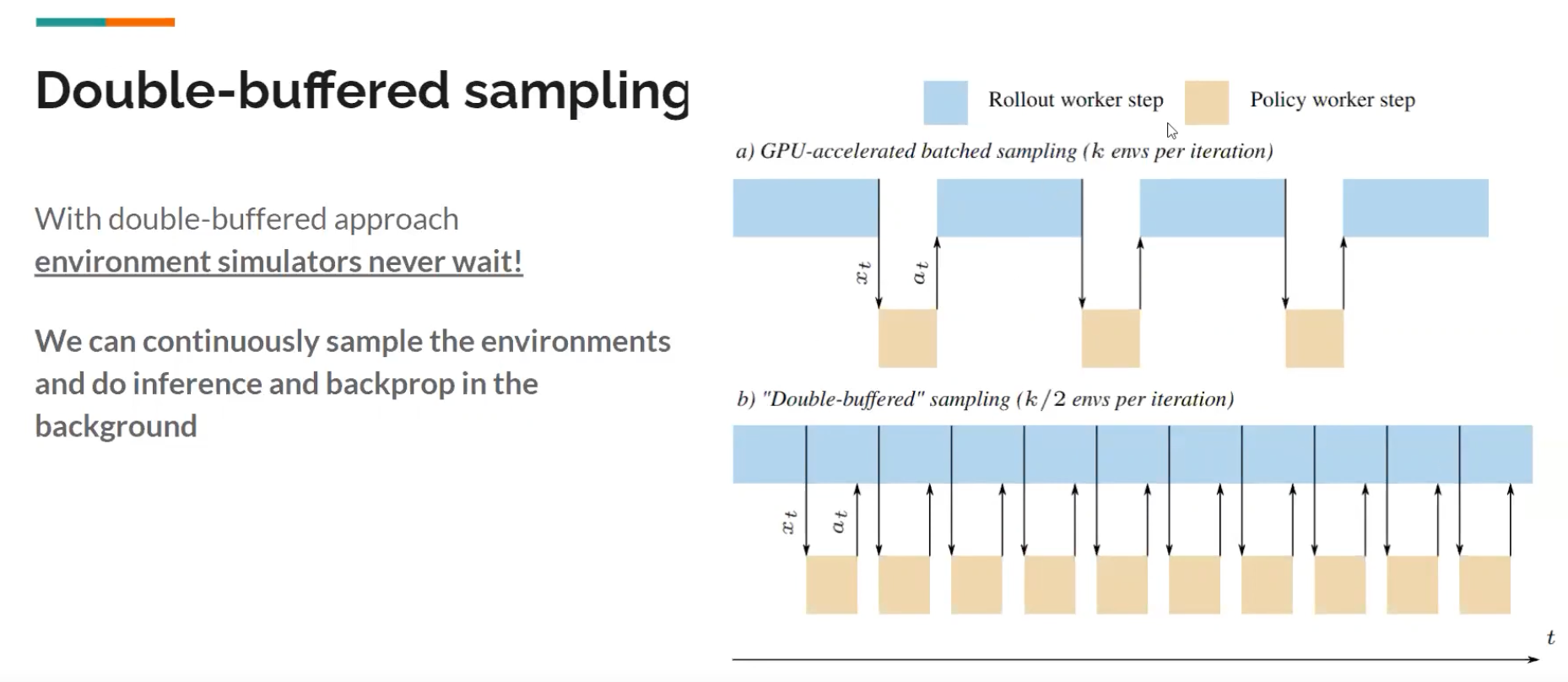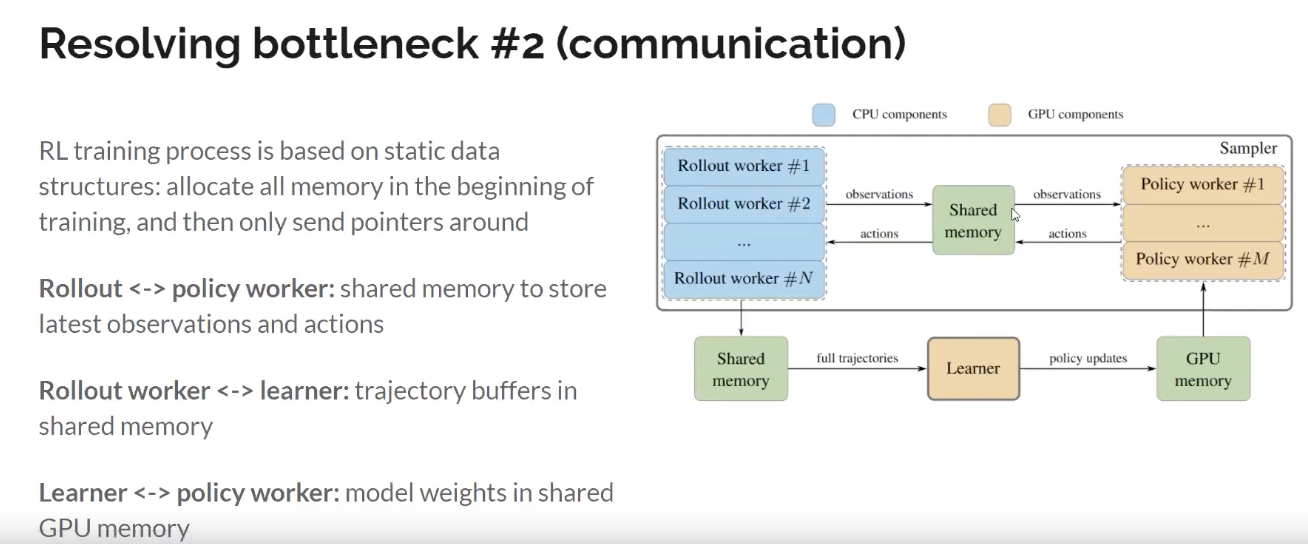[TOC]
- Title: Sample Factory: Asynchronous Rl at Very High FPS
- Author: Alex Petrenko
- Publish Year: Oct, 2020
- Review Date: Sun, Sep 25, 2022
Summary of paper
Motivation
Identifying performance bottlenecks
-
RL involves three workloads:
- environment simulation
- inference
- backpropagation
- overall performance depends on the lowest workload
- In existing methods (A2C/PPO/IMPALA) the computational workloads are dependent -> under-utilisation of the system resources.
-
Existing high-throughput methods focus on distributed training, therefore introducing a lot of overhead such as networking serialisation, etc.
- e.g., (Ray & RLLib <==> Redis/Plasma, Seed RL <==> GRPC, Catalyst <==> Mongo DB)
Contribution

Some key terms
Double-buffered sampling
- with double-buffered approach, environments simulators never wait

Resolving bottleneck # 2 (communication)
- RL training process is based on static data structures: allocate all memory in the beginning of training, and then only send pointers around (shared memory suits for single server)


